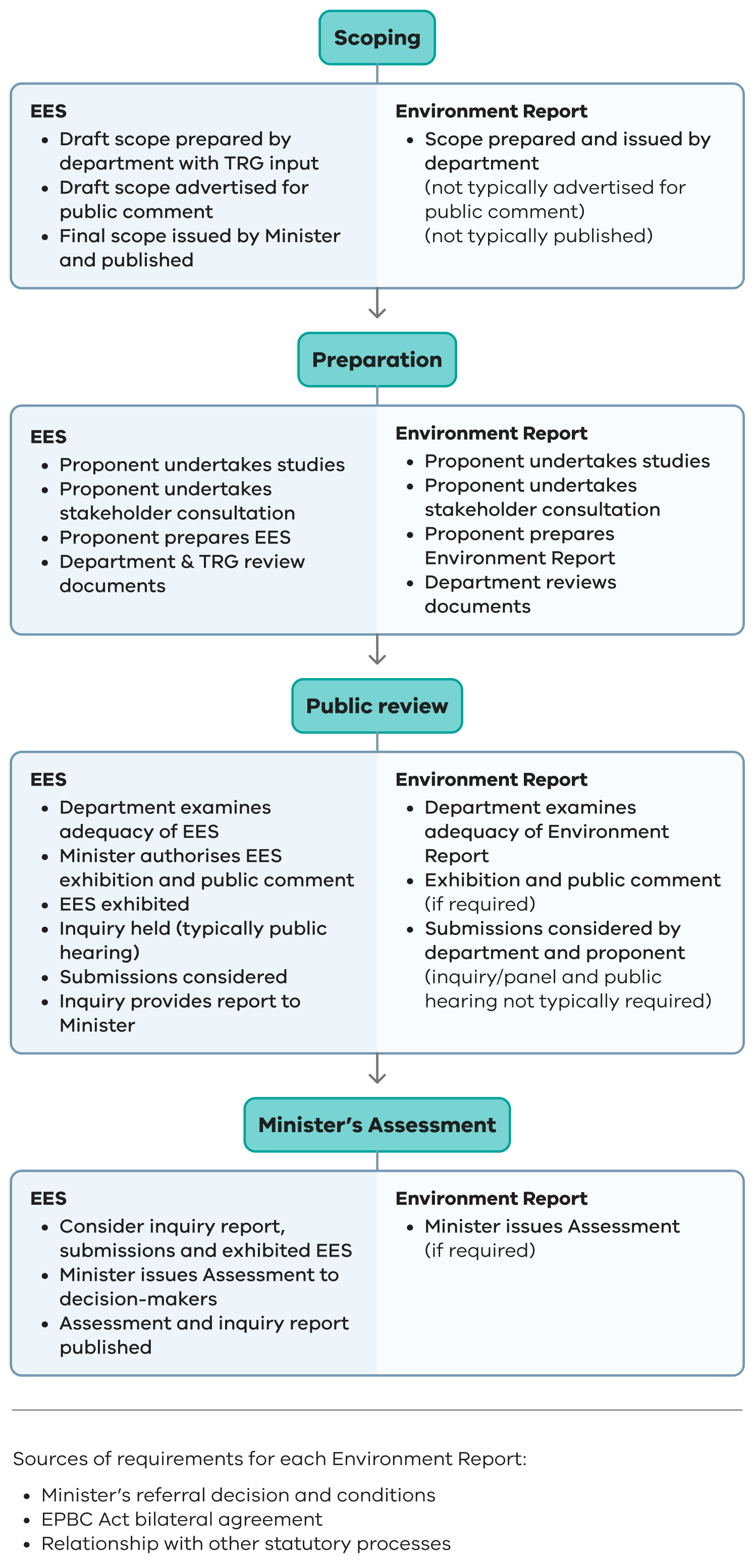Scoping and preparing an environment report
The Minister may require an environment report as an alternative form of assessment for a project, as specified in conditions set by the Minister’s decision on a referral. Figure 3 compares the assessment stages for the EES and environment report processes, depicting the different requirements and aspects for each stage. The requirements for each environment report process are sourced from the Minister’s conditions, and when relevant, the EPBC Act bilateral agreement and relationship with other relevant statutory processes.
An environment report enables efficient examination of specific matters capable of having a significant effect on the environment in a way that is
proportionate to the environmental risk posed by the project and need for transparency. An environment report may also encompass impact assessment required for other statutory processes to avoid duplication (for example, under section 42A(3) of the Mineral Resources (Sustainable Development) Act 1990), and/or be undertaken as an accredited assessment under the EPBC Act bilateral agreement, where a project is also a controlled action under the Commonwealth EPBC Act.
The specialist studies, investigations and content of an environment report will typically be guided by a scoping document prepared and issued by the department. Where required, the scope will frame the assessment needs and management of a project’s environmental effects. If required, a draft scoping document for an environment report will be exhibited for public comment, but this step is not usually part of an environment report process (Figure 3).
When necessary, the department may appoint a TRG or more typically arrange fit-for purpose agency consultation for an environment report, to coordinate technical or policy advice on key matters. As with an EES, membership of the group will be drawn from government agencies, regional authorities, municipal councils and RAPs that have a statutory, policy or technical interest in relation to the project. However, for an
environment report, consultation and membership of any agency group will be targeted and aligned with matters to be addressed in the environment report, as identified by the Minister’s decision.

Figure 3: Stages of EES and environment report processes under the Environment Effects Act
Public review of an environment report
The Minister will determine whether it is necessary for public review of an environment report by considering the complexity of issues, level of public interest and other statutory processes and requirements (e.g. application of the EPBC Act bilateral agreement). In rare cases, public review may involve an advisory committee or panel, to reduce duplication and align processes when there is planning approval being sought (e.g. proposed planning scheme amendment or permit application).
When required, exhibition and public review of an environment report will typically entail:
- public notice of the environment report
- exhibition of the environment report for a specified period (typically 10 to 20 business days), seeking public comment
- receipt of public submissions by the department; and
- the proponent documenting its responses to issues raised in submissions and providing this to the department.
For some environment report processes, a Minister’s assessment of the environmental effects of the project will be needed to inform specific statutory decision-makers.
